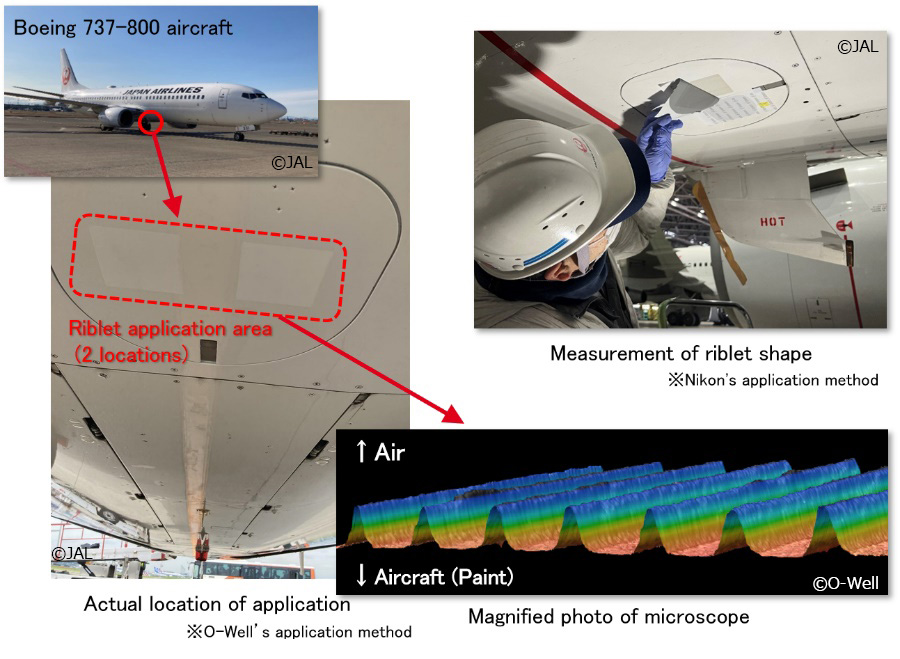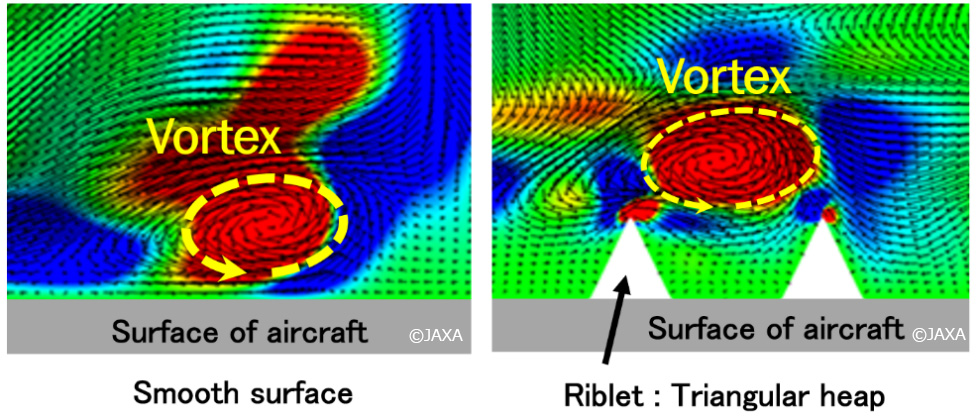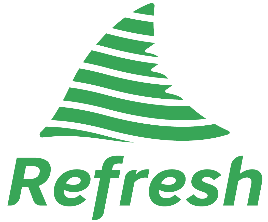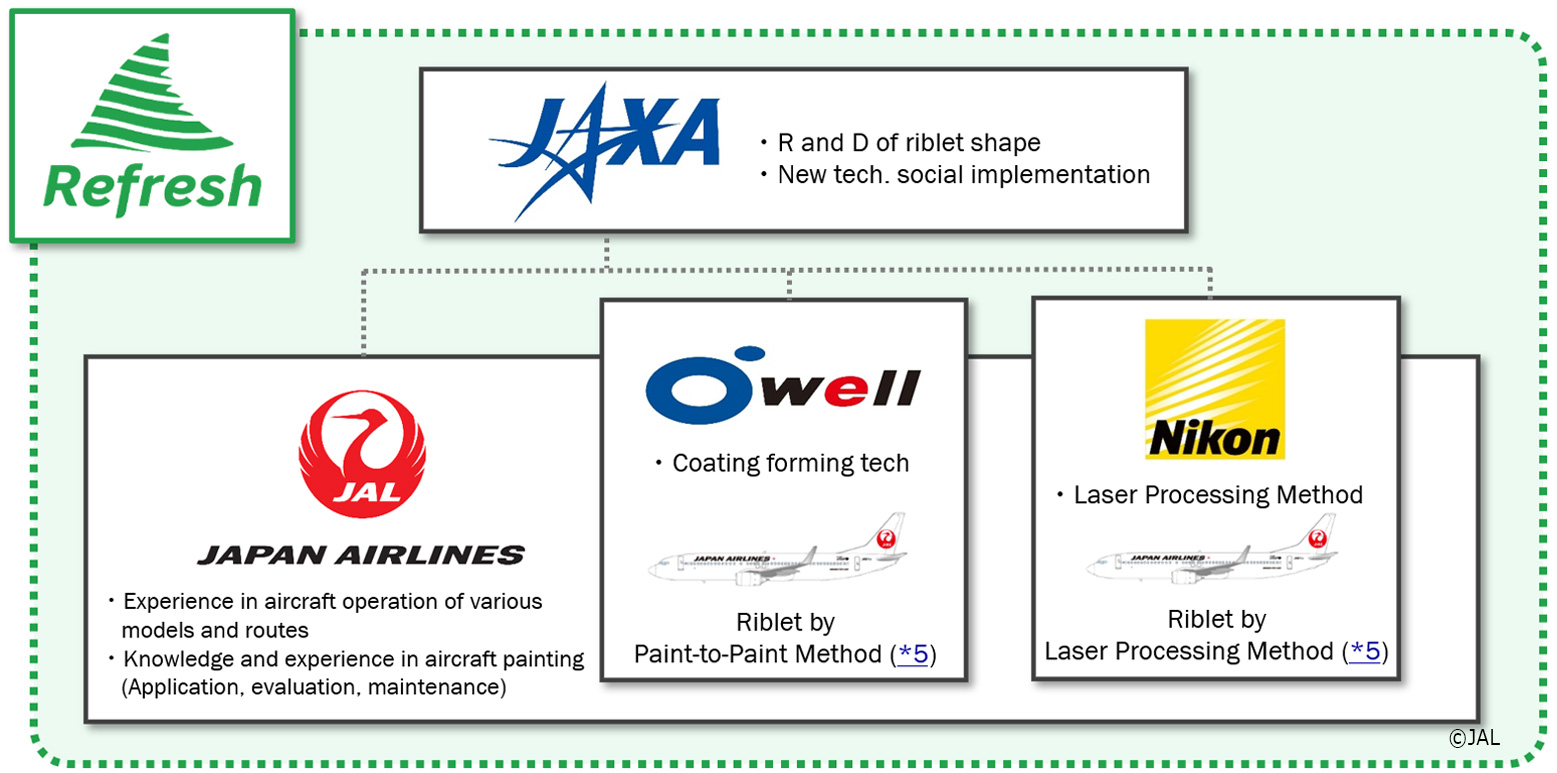JAL, JAXA, O-Well, and Nikon Conduct Flight Test with Aircraft for which
the World's First Riblet Shape was Applied over External Paint
- Contributing to the reduction of CO2 emissions by
improving aircraft fuel efficiency and to the realization of a sustainable society -
February 28, 2023 (JST)
Japan Aerospace Exploration Agency
Japan Airlines Co., Ltd. (hereinafter “JAL”), Japan Aerospace Exploration Agency (hereinafter “JAXA”), O-Well Corporation (hereinafter “O-Well”), and Nikon Corporation (hereinafter “Nikon”) have been aiming to reduce CO2 emissions by improving aircraft fuel efficiency since July 2022. The four companies are conducting flight tests using the world’s first*1 aircraft with riblets*2 applied over the aircraft’s external paint. Although there are cases such as processing riblets as decals and films and attaching them to the airframe, in this case, weight reduction and improved durability are expected as a result of applying riblets directly over the coating.
Riblets, where a skin friction reduction effect*3 was confirmed by JAXA, were applied locally to the bottom of the fuselages of two Boeing 737-800 aircraft. For one aircraft, O-Well’s processing technology was used, and for the other, that of Nikon was used.
Durability tests are currently being carried out by performing repeated inspections, measuring the changes in the shapes of the riblets incurred during test flights. As of now, more than 1,500 flight hours have been accumulated in the O-Well method aircraft, and more than 750 hours in the Nikon method aircraft, and the riblets applied by both O-Well and Nikon have been confirmed to have sufficient durability.
(*1) In the operated aircraft as of February 28, 2023. According to JAL, JAXA, O-Well, and Nikon.
by forming a fine groove structure on the aircraft exterior panel along the air flow during flight of the aircraft.

(*3) Evaluation of skin friction reduction effect by riblets at JAXA

Wind tunnel test
Skin friction reduction resulting from riblets is evaluated in a series of ground tests simulating flight conditions.

Simulation on JAXA supercomputer: Flow is perpendicular to the paper surface
Rotating flows called vortices near the surface of the aircraft increase skin friction (left figure). Skin friction is reduced because the riblets (right figure) move the vortex away from the aircraft surface wall.
■About “Refresh (RiblEt Flight RESearcH for carbon neutral)” program (*4)
By leveraging their respective strengths, JAL, JAXA, O-Well, and Nikon aim to develop eco-friendly aviation technology towards the realization of a decarbonized society in this program.
In the field of aviation, various initiatives, such as updating to fuel-saving equipment, and promotion of utilizing SAF (Sustainable aviation fuel) are underway. Among them, the introduction of fuel efficiency improvement technology that reduces skin friction (resistance with the strongest effect during flight), and riblet technology inspired by shark skin, are attracting attention from all over the world. Skin friction is reduced by applying riblets on the aircraft coating surface, resulting in a fuel efficiency improvement of up to 2%, which contributes to reducing CO2 emissions.
JAXA, which researches and develops the riblet shape, has focused on O-Well’s paint and coating technology and Nikon’s laser processing technology, promoting efforts to apply the riblets in practical use with the JAL group’s knowledge of and operation experience in aircraft, and expertise in aircraft coatings.

Refresh Mark
This mark is the symbol of this program.
With the motif of a shark's dorsal fin, which was the inspiration behind the riblet, the white lines flow smoothly along the riblet and the green lines represent environmental friendliness. The powerful image of a shark reflects the strength of this program and provides a compelling promotional tool.
(*4) “Refresh” program promotion system
(*5) Overview of each company's application method
Paint-to-Paint Method (O-Well): A method of forming concavity and convexity on a coating film by means of a water-soluble mold on an existing coating film

Laser Processing Method (Nikon): A method of forming concavity and convexity with laser directly on coating that is additionally painted in advance

JAXA has been developing riblet coating technologies, together with aerodynamic performance measurement technologies for evaluation, using computational simulations, wind tunnel tests, and flight tests with its flying test bed “Hisho”. Riblets fabricated using aviation paint (riblet coatings) are designed to have micro grooves of 0.1mm, and developed to have sufficient durability with actual operational environment in mind. Evaluation using various measurement and simulation technologies at JAXA confirmed that the developed riblets have the intended effects in reducing skin friction drag, and these results are fully leveraged in the Refresh program. JAXA is also working to develop better designs for riblets to improve both the aerodynamic performance and workability of coating processing.
Through collaborative initiatives with industry partners, JAXA promotes the practical implementation of the riblet coatings to reduce aviation-related environmental impact for the sustainable development of air transport.
End
